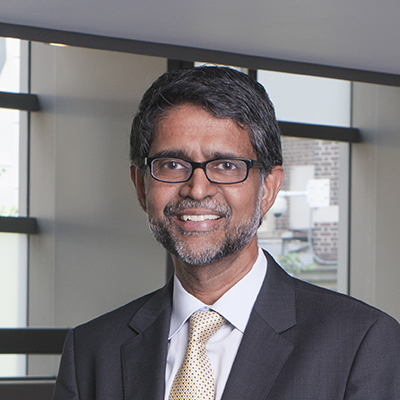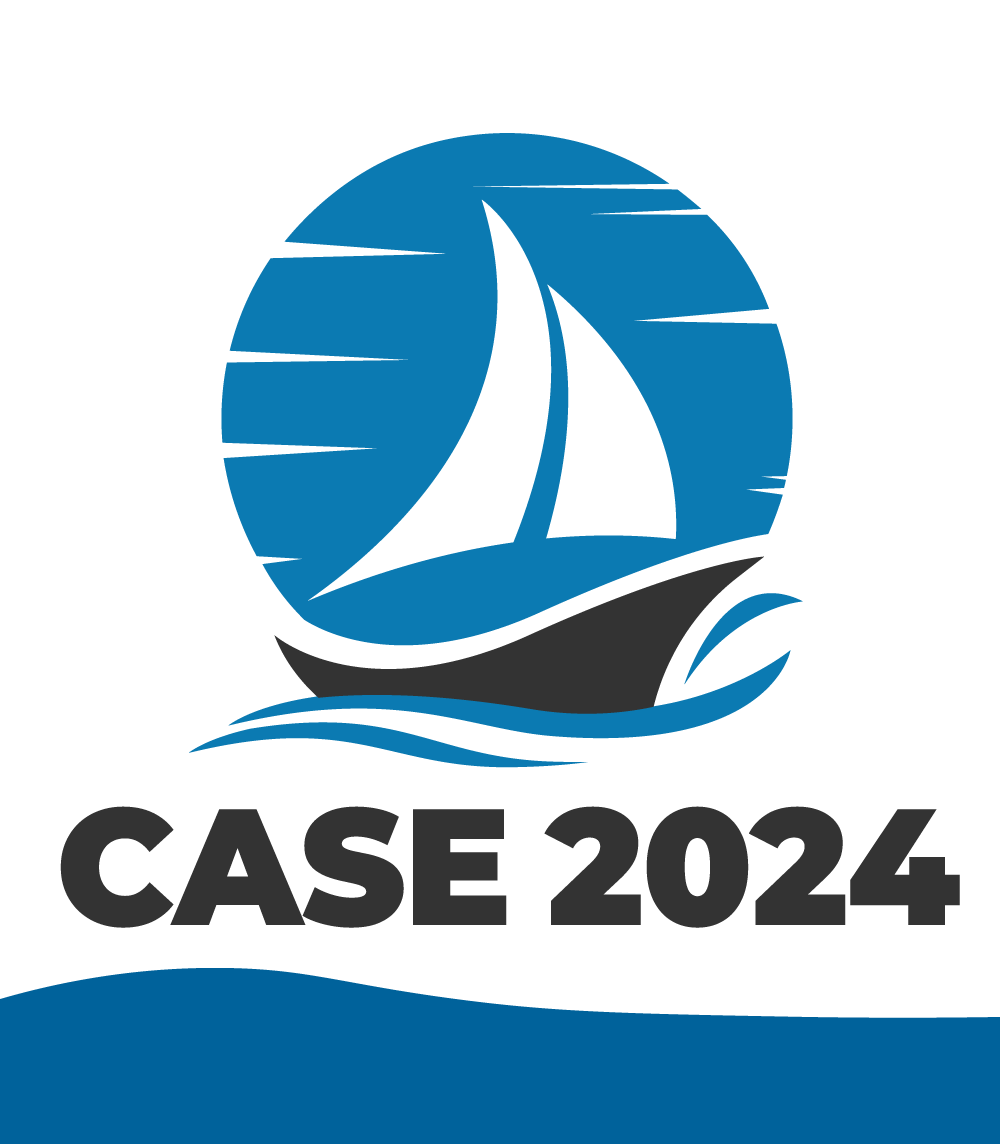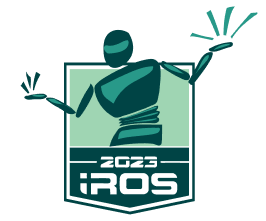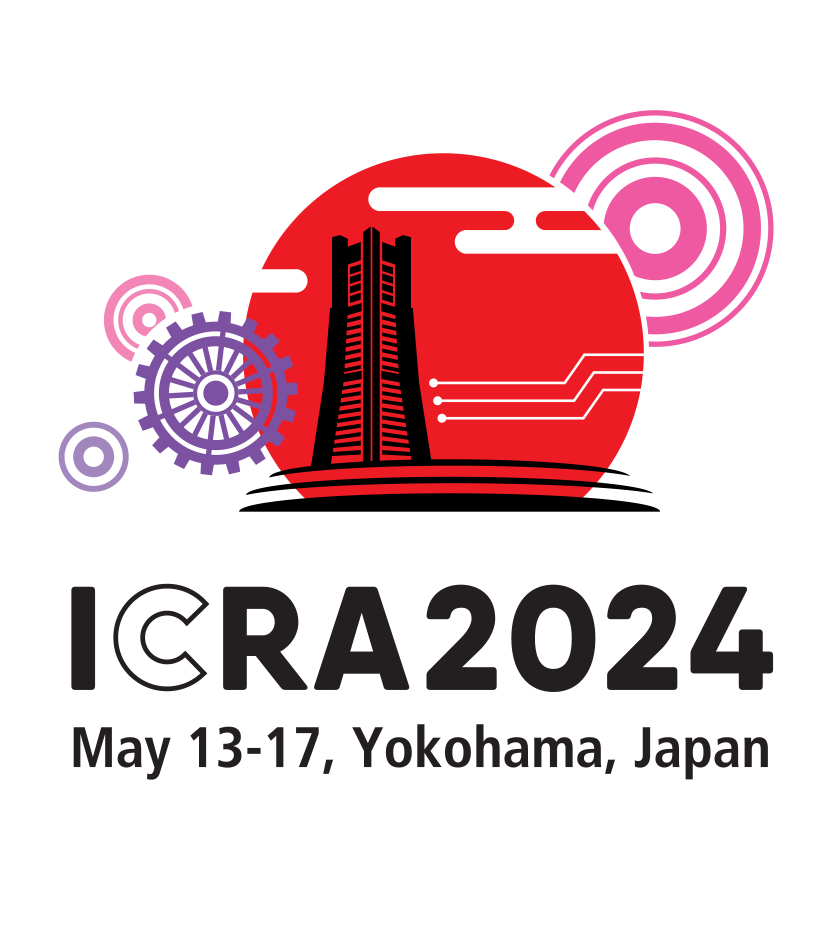Latest News

Peter Luh, a giant in the field of automation research and an important volunteer in IEEE, passed away on 28 November 2022.
Peter worked as a Professor of Electrical and Systems Engineering at the University of Connecticut for over 40 years. Ken Goldberg, a RAS Member and the William S. Floyd Jr. Distinguished Chair in Engineering at UC Berkeley, writes the following: “Peter Luh was dedicated to raising the profile of Automation in many ways. He co-founded the IEEE Transactions on Automation Science and Engineering (T-ASE) and served as its first Editor-in-Chief, where he provided the guidance, integrity, and high standards needed to successfully launch it.”
A funeral was held on 5 December; a recording is available and can be watched here. What follows below is quoted from Peter’s obituary:
A longer in memoriam article for Peter will appear in the next issue of the IEEE Robotics & Automation Magazine.
The RAS community extends its deepest sympathy to Peter’s wife Chwenhwa and his family as we remember Peter and his many contributions to the automation community, RAS, and humanity.
Congratulations to the IEEE Robotics and Automation Society members recently elevated to Senior Member status by the IEEE Admission and Advancement Senior Member Review Panel.
To be eligible for application or nomination, candidates must
- be engineers, scientists, educators, technical executives, or originators in IEEE-designated fields
- have experience reflecting professional maturity
- have been in professional practice for at least 10 years (with some credit for certain degrees)
In addition, candidates for Senior Member status must supply three references from current IEEE members holding the grade of Fellow, Senior Member, or Honorary Member. For more information, click here or email senior-member@ieee.org. The names and affiliations of the new Senior Members are as follows, listed alphabetically by region:
Region 1
Souma Chowdhury
Buffalo Section
Jignesh Panchal
Princeton/Central Jersey Section
Karthik Dantu
Buffalo Section
Region 2
Amy LaViers
Philadelphia Section
Region 3
Hao Su
Eastern North Carolina Section
Region 4
Bhushan Dharmadhikari
Southern Minnesota Section
Michael Newcomb
Nebraska Section
Eric Waydick
Milwaukee Section
Vijay Venkataraman
Twin Cities Section
Region 5
Phillip Gold
Denver Section
Xiaoli Zhang
Denver Section
Region 6
Bruce Boyes
Utah Section
Youssef Rokes
Metropolitan Los Angeles Section
Yuan Zhuang
Santa Clara Valley Section
Region 7
Ahmad Al-Dabbagh
Toronto Section
Ehsan Hashemi
Northern Canada Section
Region 8
Aamir Ahmad
Germany Section
Mahdi Bamdad
Iran Section
Andreas Bihlmaier
Germany Section
Vahid Samadi Bokharaie
Germany Section
Cosimo Della Santina
Benelux Section
Mauro Franceschelli
Italy Section
Yassen Gorbounov
Bulgaria Section
Zhanat Kappassov
Kazakhstan Subsection
Miklos Kozlovszky
Hungary Section
Mikko Lauri
Germany Section
Shayok Mukhopadhyay
United Arab Emirates Section
Gionata Salvietti
Italy Section
Tadele Tuli
Germany Section
Gurvinder Virk
United Kingdom and Ireland Section
Region 9
Rene Avila
Colombia Section
Julio Cuenca
Ecuador Section
Tiago DoNascimento
Northeast Brazil Section
Ma. Guadalupe Ortiz-Lopez
Guanajuato Section
Luis Serpa
Ecuador Section
Juan Tisza
Peru Section
Region 10
Aylchino Louise Philip A. Alcantara
Republic of Philippines Section
Maleeha Azeez
Kerala Section
Bingtuan Gao
Nanjing Section
Chengzhi Hu
Guangzhou Section
Sumit Jha
Delhi Section
Mohanraj Kalidass
Madras Section
Yasir Khan
Lahore Section
Hanna Kurniawati
Australian Capital Terr Section
Akio Kurobe
Kansai Section
Xiang Li
Beijing Section
Arvind Reddy Maram
Hyderabad Section
Jianjun Meng
Beijing Section
Hiroyuki Murata
Nagoya Section
Mani Narayanasamy
Madras Section
Shantipal Ohol
Pune Section
Thierry Peynot
Queensland Section
Arunkumar R
Madras Section
Sreekanth R
Madras Section
Sreeja S
Kerala Section
Gayatri Sakya
Uttar Pradesh Section
Murali Sivanesan
Madras Section
Jin-Ho Suh
Seoul Section
Weiqun Wang
Beijing Section
The 2023 IEEE/SICE International Symposium on System Integration (SII) will take place in Atlanta on 17–20 January 2023.
Early Bird registration is now open, and the deadline is 15 December.
With the submission deadline of IROS 2023 and other exciting RAS conferences on the horizon, please consider participating as a Senior Reviewer in the Young Reviewers Program(YRP) of the IEEE Robotics and Automation Society (RAS).
The YRP is intended to introduce young RAS members to best practices in peer review for scientific papers. Effective peer review is crucial for the scientific community, yet systematic training in peer review is often not provided. As a Senior Reviewer, you can give reviewing assignments to Junior Reviewers, and you oversee the review process in a mentor-mentee relationship. Agreeing to serve will not increase the number of papers that you review. Only papers that you have already agreed to review would be eligible for the YRP. In this way, there should be no net increase in your reviewing workload. The time you would normally spend writing a careful review would be invested instead in cultivating skills in a Junior Reviewer.
As a Senior Reviewer, you can email a Junior Reviewer listed on the YRP website. Assign to the Junior Reviewer one paper that you have been asked to review and then work with the Junior Reviewer to write and improve the review, which you will submit via PaperPlaza.
You may also ask competent members of your research group to join the YRP as Junior Reviewers and elect to work with them. Typically, a Junior Reviewer would be a doctoral graduate student or a post-doc, whereas a Senior Advisor would be the one who can be an academic advisor or a research supervisor of those Junior Reviewers. Reviewer applications will be evaluated by the YRP Chairs listed below.
Additionally, the YRP recently started to promote reviewing best practices throughout the entire RAS community with dedicated events and online material. The first YRP event was held online right after ICRA 2023 paper submission deadline; you can find the information and recordings here. And stay tuned for upcoming events!
Details of Eligibility and Procedure
Please sign up via the YRP website here.
YRP Chairs
Marta Lorenzini (IEEE-RAS YRP Executive Manager – marta.lorenzini@iit.it)
Paolo Robuffo Giordano (IEEE-RAS YRP Executive Manager - paolo.robuffo_giordano@irisa.fr)
YRP Advisory Board
Marco Morales (IEEE-RAS YRP Website Manager)
Arash Ajoudani (IEEE-RAS Chair of Young Professionals)
Nancy Amato (IEEE-RAS MAB member)
|
|
Vijay Kumar, a RAS Member and the Nemirovsky Family Dean of the School of Engineering and Applied Science at the University of Pennsylvania, was named a National Academy of Inventors (NAI) Fellow for 2022. RAS congratulates Professor Kumar on receiving this most prestigious honor. You can read more about the NAI Fellows Program and Professor Kumar’s achievements here. |
We are pleased to announce that a new issue of IEEE Transactions on Robotics (Volume 38, Issue 6, December 2022) is now available on IEEE Xplore. Click here for the table of contents, and check out the issue now on Xplore!
We are pleased to announce that the December 2022 issue of IEEE Robotics & Automation Magazine on biomimetic perception, cognition, and control (Volume 29, Issue 4) is now available on IEEE Xplore. Click here for the table of contents, and check out the issue now on Xplore!
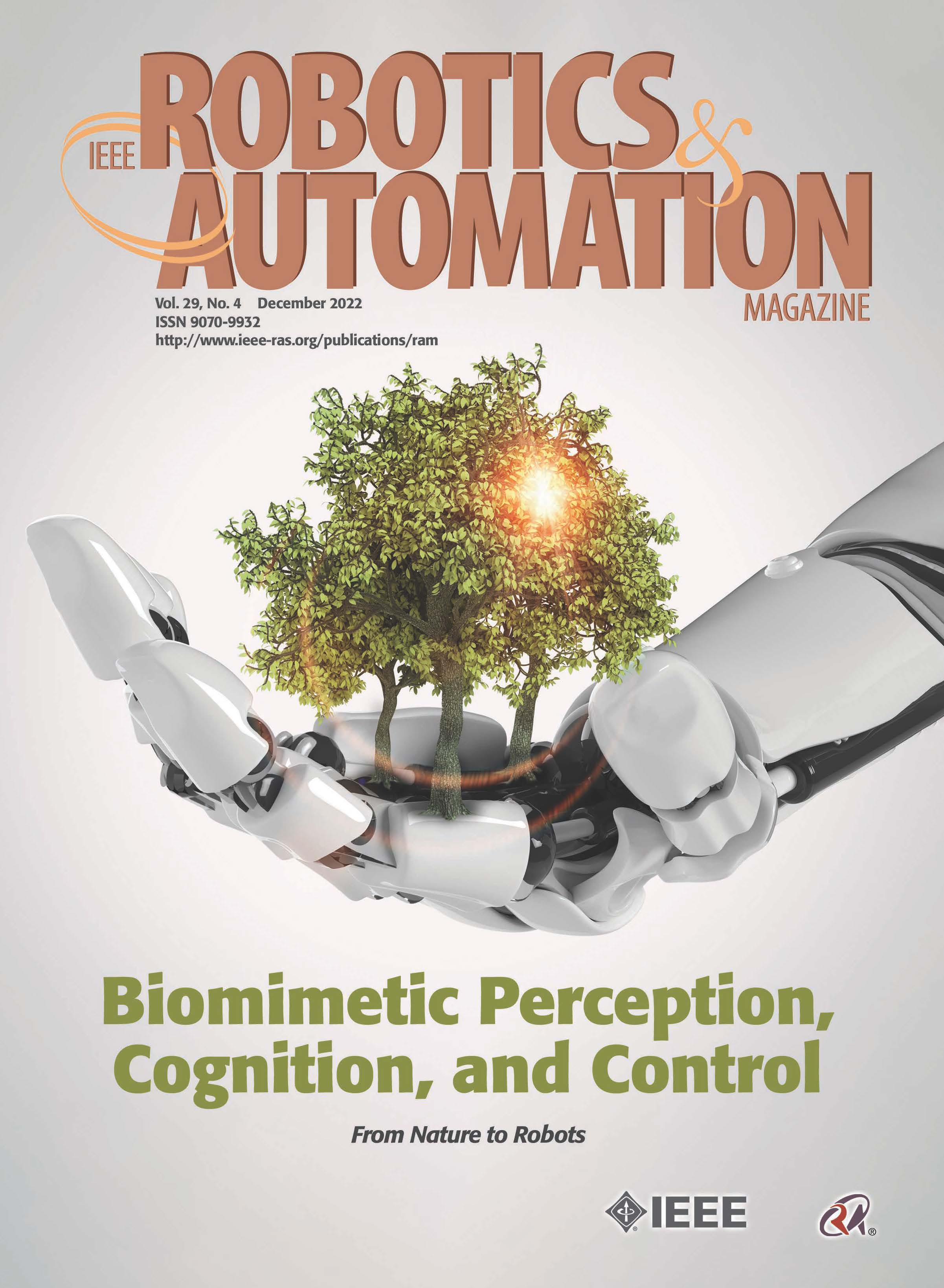
We are pleased to announce that the following IEEE Robotics and Automation Letters (RA-L) papers are now available on Xplore.
“Self-Supervised Monocular Depth Estimation with Isometric-Self-Sample-Based Learning”
G. Cha; H. -D. Jang; D. Wee
“Permanent-magnetically Amplified Robotic Gripper with Less Clamping Width Influence on Compensation Realized by a Stepless Width Adjustment Mechanism”
T. Shimizu; K. Tadakuma; M. Watanabe; K. Abe; M. Konyo; S. Tadokoro
“Robust Adaptive Ensemble Adversary Reinforcement Learning”
P. Zhai; T. Hou; X. Ji; Z. Dong; L. Zhang
“Planning Irregular Object Packing via Hierarchical Reinforcement Learning”
S. Huang; Z. Wang; J. Zhou; J. Lu
“Autonomous Dozer Sand Grading Under Localization Uncertainties”
Y. Miron; Y. Goldfracht; C. Ross; D. D. Castro; I. Klein
“Learning Stable Vector Fields on Lie Groups”
J. Urain; D. Tateo; J. Peters
“A Palm-Sized Omnidirectional Mobile Robot Driven by 2-DOF Torus Wheels”
Y. Sato; A. Kanada; T. Mashimo
“BoW3D: Bag of Words for Real-Time Loop Closing in 3D LiDAR SLAM”
Y. Cui; X. Chen; Y. Zhang; J. Dong; Q. Wu; F. Zhu
“A CoppeliaSim Dynamic Simulator for the Da Vinci Research Kit”
M. Ferro; A. Mirante; F. Ficuciello; M. Vendittelli
“Overload Clutch With Integrated Torque Sensing and Decoupling Detection for Collision Tolerant Hybrid High-Speed Industrial Cobots”
F. Ostyn; B. Vanderborght; G. Crevecoeur
“ViewBirdiformer: Learning to recover ground-plane crowd trajectories and ego-motion from a single ego-centric view”
M. Nishimura; S. Nobuhara; K. Nishino
“A Novel Metamorphic Foot Mechanism With Toe Joints Based on Spring-Loaded Linkages”
J. Sun; Z. Wang; M. Zhang; S. Zhang; Z. Qian; J. Chu
“A Framework for Robot Self-Assessment of Expected Task Performance”
T. Frasca; M. Scheutz
“SphereVLAD++: Attention-based and Signal-enhanced Viewpoint Invariant Descriptor”
S. Zhao; P. Yin; G. Yi; S. Scherer
“Towards a Discrete Snake-like Robot Based on SMA-actuated Tristable Modules For Follow The Leader Control Strategy”
B. Calmé; L. Rubbert; Y. Haddab
“Guided Spatial Propagation Network for Depth Completion”
L. Chen; Q. Li
“Real-time Hetero-Stereo Matching for Event and Frame Camera with Aligned Events Using Maximum Shift Distance”
H. Kim; S. Lee; J. Kim; H. J. Kim
“Manufacturing and Design of Inflatable Kirigami Actuators”
S. Chung; A. Coutinho; H. Rodrigue
“Hardware-Accelerated Mars Sample Localization Via Deep Transfer Learning From Photorealistic Simulations”
R. Castilla-Arquillo; C. Pérez-del-Pulgar; G. J. Paz-Delgado; L. Gerdes
“P-satI-D Shape Regulation of Soft Robots”
P. Pustina; P. Borja; C. D. Santina; A. De Luca
“Sigma-FP: Robot Mapping of 3D Floor Plans With an RGB-D Camera Under Uncertainty”
J. -L. Matez-Bandera; J. Monroy; J. Gonzalez-Jimenez
“Hybrid Learning of Time-Series Inverse Dynamics Models for Locally Isotropic Robot Motion”
T. -C. Çallar; S. Böttger
“Risk-Aware Fast Trajectory Planner for Uncertain Environments Based on Probabilistic Surrogate Reliability and Risk Contours”
G. -B. Wang
“EB-LG Module for 3D Point Cloud Classification and Segmentation”
J. Chen; Y. Zhang; F. Ma; Z. Tan
“Point Cloud Change Detection With Stereo V-SLAM: Dataset, Metrics and Baseline”
Z. Lin; J. Yu; L. Zhou; X. Zhang; J. Wang; Y. Wang
“Robot Navigation in Complex Workspaces Using Conformal Navigation Transformations”
L. Fan; J. Liu; W. Zhang; P. Xu
We are pleased to announce that the following IEEE Robotics and Automation Letters (RA-L) papers are now available on Xplore.
“Self-Supervised Monocular Depth Estimation with Isometric-Self-Sample-Based Learning”
G. Cha; H. -D. Jang; D. Wee
“Permanent-magnetically Amplified Robotic Gripper with Less Clamping Width Influence on Compensation Realized by a Stepless Width Adjustment Mechanism”
T. Shimizu; K. Tadakuma; M. Watanabe; K. Abe; M. Konyo; S. Tadokoro
“Robust Adaptive Ensemble Adversary Reinforcement Learning”
P. Zhai; T. Hou; X. Ji; Z. Dong; L. Zhang
“Planning Irregular Object Packing via Hierarchical Reinforcement Learning”
S. Huang; Z. Wang; J. Zhou; J. Lu
“Autonomous Dozer Sand Grading Under Localization Uncertainties”
Y. Miron; Y. Goldfracht; C. Ross; D. D. Castro; I. Klein
“Learning Stable Vector Fields on Lie Groups”
J. Urain; D. Tateo; J. Peters
“A Palm-Sized Omnidirectional Mobile Robot Driven by 2-DOF Torus Wheels”
Y. Sato; A. Kanada; T. Mashimo
“BoW3D: Bag of Words for Real-Time Loop Closing in 3D LiDAR SLAM”
Y. Cui; X. Chen; Y. Zhang; J. Dong; Q. Wu; F. Zhu
“A CoppeliaSim Dynamic Simulator for the Da Vinci Research Kit”
M. Ferro; A. Mirante; F. Ficuciello; M. Vendittelli
“Overload Clutch With Integrated Torque Sensing and Decoupling Detection for Collision Tolerant Hybrid High-Speed Industrial Cobots”
F. Ostyn; B. Vanderborght; G. Crevecoeur
“ViewBirdiformer: Learning to recover ground-plane crowd trajectories and ego-motion from a single ego-centric view”
M. Nishimura; S. Nobuhara; K. Nishino
“A Novel Metamorphic Foot Mechanism With Toe Joints Based on Spring-Loaded Linkages”
J. Sun; Z. Wang; M. Zhang; S. Zhang; Z. Qian; J. Chu
“A Framework for Robot Self-Assessment of Expected Task Performance”
T. Frasca; M. Scheutz
“SphereVLAD++: Attention-based and Signal-enhanced Viewpoint Invariant Descriptor”
S. Zhao; P. Yin; G. Yi; S. Scherer
“Towards a Discrete Snake-like Robot Based on SMA-actuated Tristable Modules For Follow The Leader Control Strategy”
B. Calmé; L. Rubbert; Y. Haddab
“Guided Spatial Propagation Network for Depth Completion”
L. Chen; Q. Li
“Real-time Hetero-Stereo Matching for Event and Frame Camera with Aligned Events Using Maximum Shift Distance”
H. Kim; S. Lee; J. Kim; H. J. Kim
“Manufacturing and Design of Inflatable Kirigami Actuators”
S. Chung; A. Coutinho; H. Rodrigue
“Hardware-Accelerated Mars Sample Localization Via Deep Transfer Learning From Photorealistic Simulations”
R. Castilla-Arquillo; C. Pérez-del-Pulgar; G. J. Paz-Delgado; L. Gerdes
“P-satI-D Shape Regulation of Soft Robots”
P. Pustina; P. Borja; C. D. Santina; A. De Luca
“Sigma-FP: Robot Mapping of 3D Floor Plans With an RGB-D Camera Under Uncertainty”
J. -L. Matez-Bandera; J. Monroy; J. Gonzalez-Jimenez
“Hybrid Learning of Time-Series Inverse Dynamics Models for Locally Isotropic Robot Motion”
T. -C. Çallar; S. Böttger
“Risk-Aware Fast Trajectory Planner for Uncertain Environments Based on Probabilistic Surrogate Reliability and Risk Contours”
G. -B. Wang
“EB-LG Module for 3D Point Cloud Classification and Segmentation”
J. Chen; Y. Zhang; F. Ma; Z. Tan
“Point Cloud Change Detection With Stereo V-SLAM: Dataset, Metrics and Baseline”
Z. Lin; J. Yu; L. Zhou; X. Zhang; J. Wang; Y. Wang
“Robot Navigation in Complex Workspaces Using Conformal Navigation Transformations”
L. Fan; J. Liu; W. Zhang; P. Xu
“Multi-Level Structure-Enhanced Network for 3D Single Object Tracking in Sparse Point Clouds”
Q. Wu; C. Sun; J. Wang
“Grasp Stability and Design Analysis of a Flexure-Jointed Gripper Mechanism via Efficient Energy-Based Modeling”
P. Kuresangsai; M. O. T. Cole; G. Hao
“A Markov Chain Model for Workflow Analysis in Operating Rooms”
H. Zheng; Q. Wang; J. Li
“Continuous-Time Trajectory Estimation for Differentially Flat Systems”
J. C. Johnson; J. G. Mangelson; R. W. Beard
“A Normalized Disparity Loss for Stereo Matching Networks”
S. Chen; Z. Xiang; P. Xu; X. Zhao
“Scale-Aware Squeeze-and-Excitation for Lightweight Object Detection”
Z. Xu; X. Hong; T. Chen; Z. Yang; Y. Shi
“Inflated Bendable Eversion Cantilever Mechanism With Inner Skeleton for Increased Stiffness”
T. Takahashi; M. Watanabe; K. Abe; K. Tadakuma; N. Saiki; M. Konyo; S. Tadokoro
“Point Clouds Outlier Removal Method Based on Improved Mahalanobis and Completion”
C. Qu; Y. Zhang; K. Huang; S. Wang; Y. Yang
“Haptic-Based and $SE(3)$-Aware Object Insertion Using Compliant Hands”
O. Azulay; M. Monastirsky; A. Sintov
“Template-Based Category-Agnostic Instance Detection for Robotic Manipulation”
Z. Hu; R. Tan; Y. Zhou; J. Woon; C. Lv
“Hybrid Safety Certificate for Fast Collision Checking in Sampling-Based Motion Planning”
S. Shi; J. Chen; Y. Li
“Consensus-Based Decentralized Task Allocation for Multi-Agent Systems and Simultaneous Multi-Agent Tasks”
S. Wang; Y. Liu; Y. Qiu; J. Zhou
“Generalized LOAM: LiDAR Odometry Estimation With Trainable Local Geometric Features”
K. Honda; K. Koide; M. Yokozuka; S. Oishi; A. Banno
“Simplified Configuration Design of Anthropomorphic Hand Imitating Specific Human Hand Grasps”
X. Tian; Q. Zhan; Y. Zhang; J. Zou; L. Jiang; Q. Xu
“Online and Real-Time Trajectory Generation Method for Unforeseen Events Using a Modified Spline Approach”
M. Altan Toksöz; M. Ö. Efe; V. Gazi
“Collision Avoidance Among Dense Heterogeneous Agents Using Deep Reinforcement Learning”
K. Zhu; B. Li; W. Zhe; T. Zhang
“Self-Supervised Point Cloud Understanding via Mask Transformer and Contrastive Learning”
D. Wang; Z. -X. Yang
“Forest: A Lightweight Semantic Image Descriptor for Robust Visual Place Recognition”
P. Hou; J. Chen; J. Nie; Y. Liu; J. Zhao
“Winding Through: Crowd Navigation via Topological Invariance”
C. Mavrogiannis; K. Balasubramanian; S. Poddar; A. Gandra; S. S. Srinivasa
“A Joint Acceleration Estimation Method Based on a High-Order Disturbance Observer”
J. Zhang; P. Nie; Y. Chen; B. Zhang
“Deep Reinforcement Learning for Decentralized Multi-Robot Exploration with Macro Actions”
A. H. Tan; F. P. Bejarano; Y. Zhu; R. Ren; G. Nejat
“Gaussian Mixture Midway-Merge for Object SLAM with Pose Ambiguity”
J. H. Jung; C. G. Park
“Ambiguity-Aware Multi-Object Pose Optimization for Visually-Assisted Robot Manipulation”
M. -H. Jeon; J. Kim; J. -H. Ryu; A. Kim
“Rethinking Feature Extraction: Gradient-Based Localized Feature Extraction for End-To-End Surgical Downstream Tasks”
W. Pang; M. Islam; S. Mitheran; L. Seenivasan; M. Xu; H. Ren
“Long-Term Localization Using Semantic Cues in Floor Plan Maps”
N. Zimmerman; T. Guadagnino; X. Chen; J. Behley; C. Stachniss
“Deep IMU Bias Inference for Robust Visual-Inertial Odometry With Factor Graphs”
R. Buchanan; V. Agrawal; M. Camurri; F. Dellaert; M. Fallon
“Untethered Microrobots Driven by kV-Level Capacitive Actuators via Mechanical Electrostatic Inverters”
W. Zhan; M. Qi; Z. Liu; J. Leng; H. Zhang; R. Yun; X. Yan
“HI-Net: Boosting Self-Supervised Indoor Depth Estimation via Pose Optimization”
G. Wu; K. Li; L. Wang; R. Hu; Y. Guo; Z. Chen
“Design and Modeling of a Dual-Ball Self-Balancing Robot”
X. Gao; L. Yan; Z. He; G. Wang; I. -M. Chen
“Accelerating Certifiable Estimation with Preconditioned Eigensolvers”
D. M. Rosen
“Measuring Interaction Bandwidth During Physical Human-Robot Collaboration”
A. Kalinowska; M. Schlafly; K. Rudy; J. P. Dewald; T. D. Murphey
“A Novel Variable-Diameter-Stiffness Guiding Sheath for Endoscopic Surgery”
H. Wang; S. Zuo
“IC-GVINS: A Robust, Real-Time, INS-Centric GNSS-Visual-Inertial Navigation System”
X. Niu; H. Tang; T. Zhang; J. Fan; J. Liu
“Learning Efficient Policies for Picking Entangled Wire Harnesses: An Approach to Industrial Bin Picking”
X. Zhang; Y. Domae; W. Wan; K. Harada
“GMF: General Multimodal Fusion Framework for Correspondence Outlier Rejection”
X. Huang; W. Qu; Y. Zuo; Y. Fang; X. Zhao
We are pleased to announce the 19th IEEE International Conference on Advanced Robotics and Its Social Impacts (ARSO 2023), which will take place in Berlin, Germany on 5 – 7 June 2023, in conjunction with ICRA 2023. Contributions for papers and organized sessions are now open (accepted papers will be published in the conference proceedings and on IEEE Xplore).
Please note that the organized session proposal deadline has been extended to December 14th.
Summary
Advanced robots are expected to enter in promising applications in our future society and bring substantial impacts. The increasing implementation of AI-based components even broadens their fields of application. To ensure that these impacts are positively reflected, we must now extend views not only on technical aspects but also on social challenges that we might face, which relate to issues such as safety, regulation, ethics, human factors, and philosophy.
Topics of Interest
- Human-robot interaction in physical & psychological aspects
- Safety standards for advanced robots & autonomous systems
- Legal and ethical issues for advanced robots
- Impact of robotics on society, e.g. robot business, marketing & economic impact
- Robotics for sustainability, climate change or civil aid
- Advanced industrial robots for future manufacturing
- Healthcare & medical applications
- Rehabilitation and transfer robotics
- Service & assistance applications
- Entertainment & education robotics
- Robotics & autonomous driving
- Bio-inspired robotics
- Soft and wearable robotics
Check out our website for more details.
Key Dates and Deadlines
- Organized session proposal deadline: 14 Dec 2022
- Notification of Organized Session Acceptance: 15 Dec 2022
- Initial paper submission deadline: 31 Jan 2023
- Notification of Paper Acceptance: 1 April 2023
- Final paper submission deadline: 30 April 2023
We are pleased to announce that a new issue of IEEE Robotics and Automation Letters (Volume 8, Issue 1, January 2023) is now available on IEEE Xplore. Check it out!
 |
Recognizing the achievements of its members is an important part of the mission of IEEE. Each year, following a rigorous evaluation procedure, the IEEE Board of Directors selects a group of members for elevation to IEEE Fellow. The IEEE Fellow is the highest grade of membership in IEEE. Less than 0.1% of voting members are selected annually for this member grade elevation. It is recognized by the technical community as a prestigious honor and an important career achievement. The following RAS members have been elevated to IEEE Fellow, effective 1 January 2023. |
Aaron M. Dollar - Yale University, New Haven, (CT) USA
for contributions to dexterous grasping and manipulation
Dario Floreano - Swiss Federal Institute of Technology, Lausanne, Switzerland
for contributions to bio-inspired drone development and evolutionary robotics
Antonio Franchi - University of Twente, Enschede, Netherlands
for contributions to modelling, design, and control for aerial and distributed robotic systems
Kensuke Harada - Osaka University, Toyonaka, Japan
for contributions to whole-body manipulation for biped humanoid robots
Alois C. Knoll - Institut Fuer Informatik VI, Garching, Germany
for contributions to Human-Robot Interaction and Neurorobotics
Jana Kosecka - George Mason, University Annandale, (VA) USA
for contributions to robust embodied vision systems and semantic modeling in robotics
Torsten Kroeger – Intrinsic, Menlo Park, (CA) USA
for contributions to real-time motion planning
Cecilia Laschi - National University of Singapore
for contributions to soft robotics
Karon Maclean
University of British Columbia, Vancouver, (BC) Canada
for contributions to the design of haptic communication
Arianna Menciassi - Scuola Superiore Sant'Anna, Pontedera, Italy
for contributions to the development of robots for minimally invasive surgery
Kazuhiro Nakadai - Tokyo Institute of Technology, Japan
for contributions to robot audition and computational auditory scene analysis
Christian Ott - German Aerospace Center, Wessling, Germany
for contributions to torque-control theory using passive joint elasticity and the whole-body control of humanoids
Jose A. Santos-Victor - Instituto Superior Tecnico, Lisbon, Portugal
for contributions to biologically inspired cognitive vision and humanoid robotic systems
Birgit Vogel-Heuser - Technische Universitaet Muenchen, Garching, Germany
for contributions to evolvable, adaptable field-level automation architectures for manufacturing systems and logistics
YuMingZhang - University of Kentucky, Lexington, (KY) USA
for contributions to robotized welding manufacturing through machine-vision-based intelligence
Li Zhang - The Chinese University of Hong Kong, Shatin Hong
for contributions to micro-/nanorobot swarms and platforms for translational biomedicine
2023 RAS Fellows Evaluated by Other IEEE Societies
Evaluated by the Computational Intelligence Society
Hong Wang - Oak Ridge National Laboratory, Farragut, (TN) USA
for contributions to learning control and diagnosis for complex dynamical systems
Evaluated by the Computer Society
Hong Chen - Tongji University, Shanghai, China
for contributions to predictive control and applications in automotive systems
Evaluated by the Computer Society
Dimos Dimarogonas - KTH Royal Institute of Technology, Stockholm, Sweden
for contributions to distributed and hybrid control of multi-agent systems
Evaluated by the Computer Society
Kingsley Fregene - Grand Prairie, (TX) USA
for contributions to the autonomous control of unmanned vehicles
Evaluated by the Computer Society
Abdelhamid Tayebi - Lakehead University, Thunder Bay, Canada
for contributions to the control of unmanned aerial vehicles and learning-based control for robot manipulators
Evaluated by the Engineering in Medicine and Biology Society
He Huang - North Carolina State University, Raleigh, (NC) USA
for contributions in control development in rehabilitation robotics
Evaluated by the Industrial Electronics Society
Youmin Zhang - Concordia University, Montreal, Canada
for contributions to fault diagnosis and fault-tolerant control systems
Evaluated by the Systems, Man, and Cybernetics Society
Daoyi Dong - Australian Defence Force Academy, Canberra, Australia
for contributions to quantum systems control and reinforcement learning
Evaluated by the Signal Processing Society
Alfred Bruckstein - Technion International, Haifa, Israel
for contributions to signal representation and swarm robotics
More About IEEE Fellows
IEEE Fellow is a distinction reserved for select IEEE members. The honor is conferred by the Board of Directors upon a person with an extraordinary record of accomplishments in any of the IEEE fields of interest.
If you know of an IEEE colleague who is a Senior Member or Life Senior Member in good standing, has completed five years of service in any grade of IEEE Membership, and has made an outstanding contribution to the electronic or electrical engineering profession, you can nominate this person in one of four categories:
- Application Engineer/Practitioner
- Educator
- Research Engineer/Scientist
- Technical Leader
Additional information about the IEEE Fellow program, and a list of RAS Fellows is available here.
Haptic sensations are a fundamental component of the user’s immersive experience when interacting in Virtual/Augmented/Mixed/eXtended Realities (VR/AR/MR/XR). In the last few years, we have witnessed the rapid development of many innovative devices and original techniques for providing haptic sensations, e.g., using force feedback, mid-air interfaces, props, or exploiting perceptual phenomena with cross-modal effects such as pseudo-haptics. While increasingly immersive and realistic experiences have developed at a fast pace, the emergence of a metaverse proposes new use cases where prolonged utilisation and social interactions become more frequent and effective than reality. This change in direction presents the haptics community with new challenges and opportunities. To that end, the goal of this Special Issue is to present innovative cutaneous and tactile technologies as well as their use towards the metaverse vision.
Key Dates and Deadlines
- Submission deadline: 31 January 2023
- First decision sent to authors: approximately 3 months after submission
- Final decision sent to authors: approximately 6 months after submission
- Final publication material due from authors: approximately 7 months after submission
See here for more details.
We are proud to announce the IEEE International Conference on Automation Science and Engineering (CASE) to be held in Auckland, New Zealand on 26–29 August 2023. CASE is the flagship automation conference of the IEEE Robotics and Automation Society (RAS) and constitutes the primary forum for cross-industry and multidisciplinary research in automation. Its goal is to provide broad coverage and dissemination of foundational research in automation among researchers and practitioners.
The theme of CASE 2023 is Automation for a Resilient Society. For more information, please check out our flyer or visit our conference website.
Key Dates and Deadlines
- Special session proposal submissions due 15 February 2023
- Regular and special session full paper submissions due 1 March 2023
- Workshop proposal submissions, industry paper submissions, and presentation-only paper submissions due 1 April 2023
- Paper acceptance notification 15 May 2023
- Final paper submission due 15 June 2023
- Author registration due 15 June 2023
- Conference held from 26–29 August 2023
Motivation
Safety-critical tasks are very common in real-life robotic applications. Tasks are considered safety-critical when, for example, robots act in close proximity to humans, especially when they have limited knowledge about the environment.
The proposed SI hinges on contributions that advance the field of learning for robust and safe control. Our interest encompasses both theoretical and empirical results which aim to show that combining machine learning strategies with model-based controllers is the key to developing stable and robust autonomous systems that are capable of adapting to dynamic environmental changes, are resilient to external disturbances, and unmodelled dynamic effects, and that behave in accordance to the theoretical guarantees of controllers.
See our website for more information.
Key Dates and Deadlines
- Submission deadline: March 31, 2023
- Final Publication: September 27, 2023
Motivation
Physical Human-Robot Interaction (pHRI) is of great interest in robotics. Currently, we have good working knowledge about our engineered robots, but we still lack a deeper understanding about human behavior, and how to effectively use it for real-time reactive robot behavior in the context of pHRI. This understanding is crucial to evolve the pHRI paradigms into safer and more effective human-robot interactions. Therefore, progress and innovations in human modelling are necessary to significantly improve how human operators physically collaborate with Cobots, prostheses, exoskeletons, and other robotic devices.
This special issue aims to stimulate discussion and promote collaboration between the communities of robotics and biomechanics. Contributing authors will investigate the state of the art of human modelling and present modern human modelling techniques and tools to advance research in pHRI. The latest high-quality research results from both biomechanists and roboticists will be collected and presented.
Please see our website for more details.
Key Dates and Deadlines
- Submission deadline: February 1, 2023
- Final Publication: August 9, 2023
We are pleased to invite you to participate in the mc_rtc tutorial organized at the IEEE/RAS Humanoids 2022 conference.
mc_rtc is an open-source application framework for robotics developed jointly by the CNRS-AIST Joint Robotics Laboratory (JRL) in Japan and the CNRS-UM Interactive Digital Human (IDH) in France. It has been used extensively over the past few years and has allowed for the efficient realization of many complex demonstrators:
- Industrial applications of humanoid robots (e.g., COMANOID)
- Humanoids car driving (e.g., the DARPA Robotics Challenge)
- Human-Robot interaction on the Pepper platform (SOFTBANK Robotics)
- Embodiment for service robotics (Avatar X-Prize)
- and many others that will be showcased using simpler robotic arms
mc_rtc is now used in many teams across the world and has been deployed on many humanoid platforms—HRP robots, Nao, Pepper, REEM-C and Talos—as well as on non-humanoid robots such as Panda, Kuka or UR robots.
With the release of the 2.0 version, the framework is now more extendable than ever to conduct your own robotics research with the tools provided by the framework.
In this tutorial, we will introduce the capabilities of the framework through the implementation of an example scenario that requires the combination of visual-servoing, force sensing, and walking. The scenario is representative of the complexity of programming humanoid robots and will highlight the power of mc_rtc in easing this process.
The tutorial will be held on 28 November 2022 9am–5pm Japan time (GMT+9) in room B3 at the Okinawa Convention Center. See the Humanoids 2022 website for more information.
Online Attendance
Online attendance is possible. Please contact pierre.gergondet@gmail.com and we will send you a tele-conference invitation before the tutorial.
Click here to learn more about the tutorial; to learn more about mc_rtc, click here. We look forward to seeing you there in person or online.
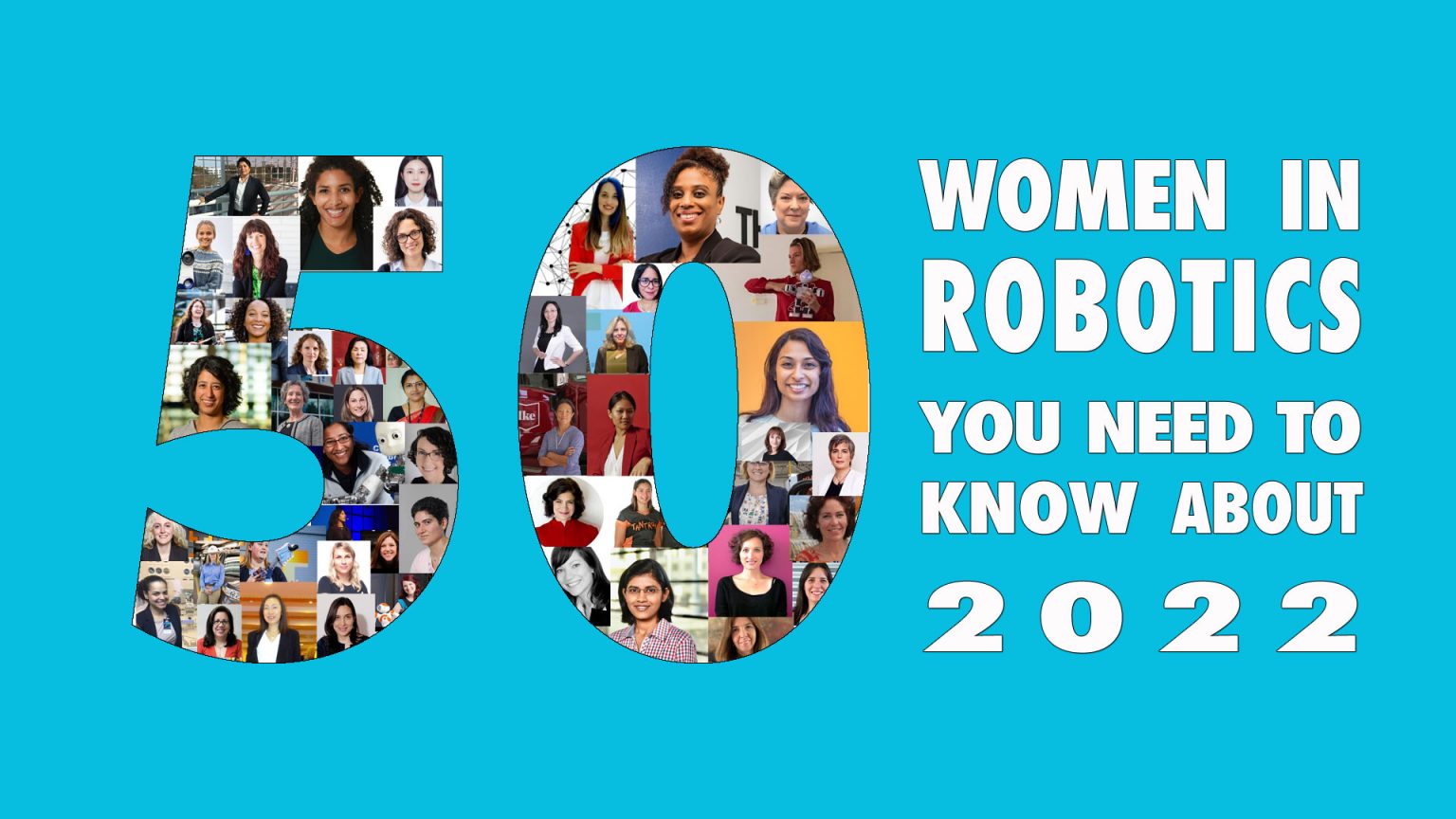 |
The 2022 edition of Robohub’s annual "50 women in robotics you need to know about" has honored six members of the IEEE Robotics and Automation Society, from all three RAS geographical regions!
Congratulations to Women in Robotics for the 10th anniversary of this important recognition for the many amazing women in robotics. |
The following IEEE Robotics and Automation Society women are included in this year's list:
- Kathy Colabaugh, IEEE Robotics and Automation Society, USA
- Jeanne Dietsch, Granite State Matters, USA
- Xiaoou Li, Center for Research and Advanced Studies of the National Polytechnic Institute of Mexico, Mexico
- Pauline Pounds, University of Queensland, Australia
- Karinne Ramirez-Amaro, Chalmers University of Technology, Sweden
- Teresa Vidal Calleja, University of Technology Sydney, Australia
Check out the full article to read more about all these impressive women.
We cordially invite you to submit contributions to the fourth edition of the focused section on T-MECH/AIM emerging topics. This focused section is intended to expedite publication of novel and significant research results, technology, and/or conceptual breakthroughs on emerging topics within the scope of T-MECH; our aim is to provide the mechatronics community with rapid access to state-of-the-art T-MECH publications.
The submission site is now open; the deadline for submissions is 6 January 2023.
For more details, click on the links above and check out our flyer.
The IEEE Robotics and Automation Society is most pleased to announce that Carlotta Berry has been selected as the recipient of the prestigious 2023 Undergraduate Teaching Award “for contributions to multidisciplinary robotics education and leadership in creating a national platform to diversify STEM.”
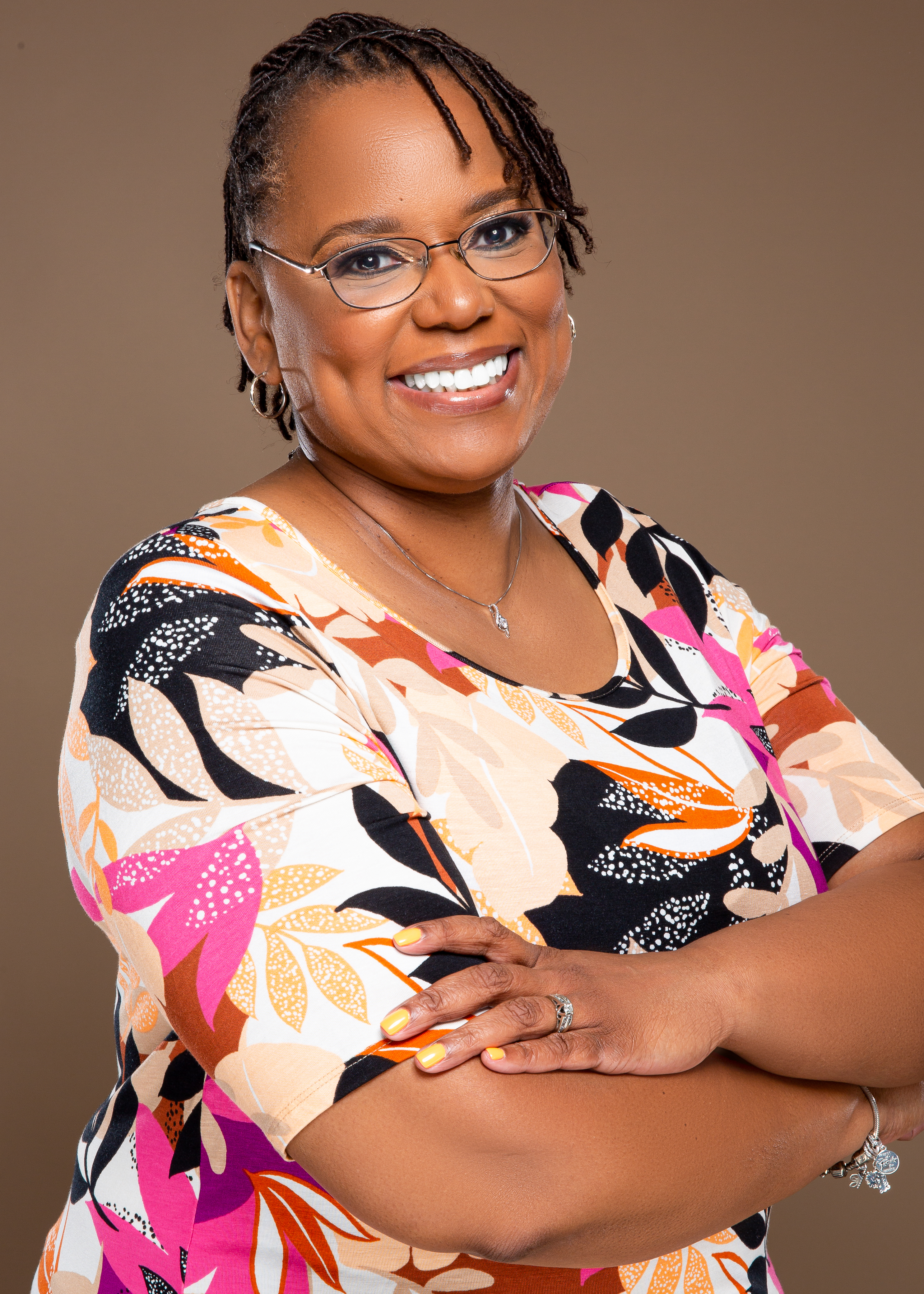 |
Carlotta Berry has a passion for increasing diversity in engineering. She is utilizing robotics and engineering education, as well as human-robot interaction research to bring STEM to diverse populations. She has built several organizations that reach out to women and marginalized and minoritized populations and encourage them to pursue STEM degrees. She founded the Rose Building Undergraduate Diversity (ROSE-BUD) program to increase the participation of underprivileged and underrepresented students in electrical and computer engineering. Berry worked with colleagues worldwide to start the nonprofits Black in Engineering and Black in Robotics that build community and advocate for diversity, equity, inclusion, and justice.
An IEEE Senior Member, Berry is the Rose Hulman Institute of Technology Lawrence J. Giacoletto Endowed Chair and professor for Electrical and Computer Engineering, Indiana, USA. |
More About the IEEE Undergraduate Teaching Award
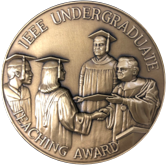 Sponsored by the IEEE Education Society, the IEEE Undergraduate Teaching Award was established by the Board of Directors in 1990 to honor teachers of electrical and electronics engineering and the related disciplines. The award consists of a bronze medal, certificate, and cash honorarium. In the evaluation process, the following criteria are considered: excellence in teaching undergraduate students; creative development of the undergraduate curriculum; authorship of course materials for undergraduate students; involvement with undergraduate students through activities such as advising, project supervision, faculty counseling or advising for student organizations; attracting students to engineering and scientific profession; and the quality of the nomination.
Sponsored by the IEEE Education Society, the IEEE Undergraduate Teaching Award was established by the Board of Directors in 1990 to honor teachers of electrical and electronics engineering and the related disciplines. The award consists of a bronze medal, certificate, and cash honorarium. In the evaluation process, the following criteria are considered: excellence in teaching undergraduate students; creative development of the undergraduate curriculum; authorship of course materials for undergraduate students; involvement with undergraduate students through activities such as advising, project supervision, faculty counseling or advising for student organizations; attracting students to engineering and scientific profession; and the quality of the nomination.
A list of past recipients can be found here.
Agricultural production is a key economic activity providing a growing world population with resources like food, fibers, fuels, and chemical basic components. Despite a growing world population, labour participation in agricultural production is declining and technology is needed to support farmers in their work. Technologies like sensing, data, artificial intelligence, and robotics will become more and more important. This special issue addresses technological progress in robotics and intelligent machine systems for smart agricultural production. Papers could address any part of the agricultural value chain including plant and animal breeding, through on-farm production, to post-harvest storage, logistics, packaging, and food processing. Besides on-farm food, feed and fiber production, off-farm production can be considered like fishery, forestry and urban landscaping and maintenance.
More information can be found here.
Deadline for submission: February 1, 2023
Special issue publication date: December 2023


